AI in Smart Agriculture
AI in agriculture transforms farming through smart technologies like drones, IoT, and machine learning, enabling precision and sustainable food production.
Smart agriculture (also called precision farming) uses sensors, drones, and artificial intelligence (AI) to make farming more efficient and sustainable. In a smart farm, data from soil moisture probes, weather stations, and satellite or drone imagery is fed into AI algorithms.
These models learn to predict needs and suggest actions – for example, when and how much to irrigate, fertilize, or harvest – minimizing waste and maximizing crop health.
Integrating AI into agriculture marks a new era of precision and efficiency, enabling tasks like automated disease detection and yield forecasting that were not possible before.
— Agricultural Technology Review
By analyzing complex patterns in farm data, AI can improve decision-making speed and accuracy, leading to higher yields and lower resource use.
Key Applications of AI in Farming
AI is already being used in many areas of agriculture. Farmers and agri-tech companies are deploying machine learning and computer vision in these key applications:
Precision Irrigation & Water Management
Crop Health Monitoring & Disease Detection
Pest Control & Weed Management
Yield & Growth Prediction
Soil & Nutrient Management
Livestock Monitoring
Supply Chain & Traceability
AI and blockchain are also entering supply chains. Intelligent systems can trace food from farm to table, verifying origin and quality. For example, blockchain records and AI-driven analytics can certify organic produce or detect food-safety issues quickly, increasing transparency and consumer trust.
By enabling these applications, AI turns traditional farms into data-driven operations. It blends Internet of Things (IoT) devices (like sensors and drones) with cloud-based analytics and on-farm computing to create a smart farming ecosystem.
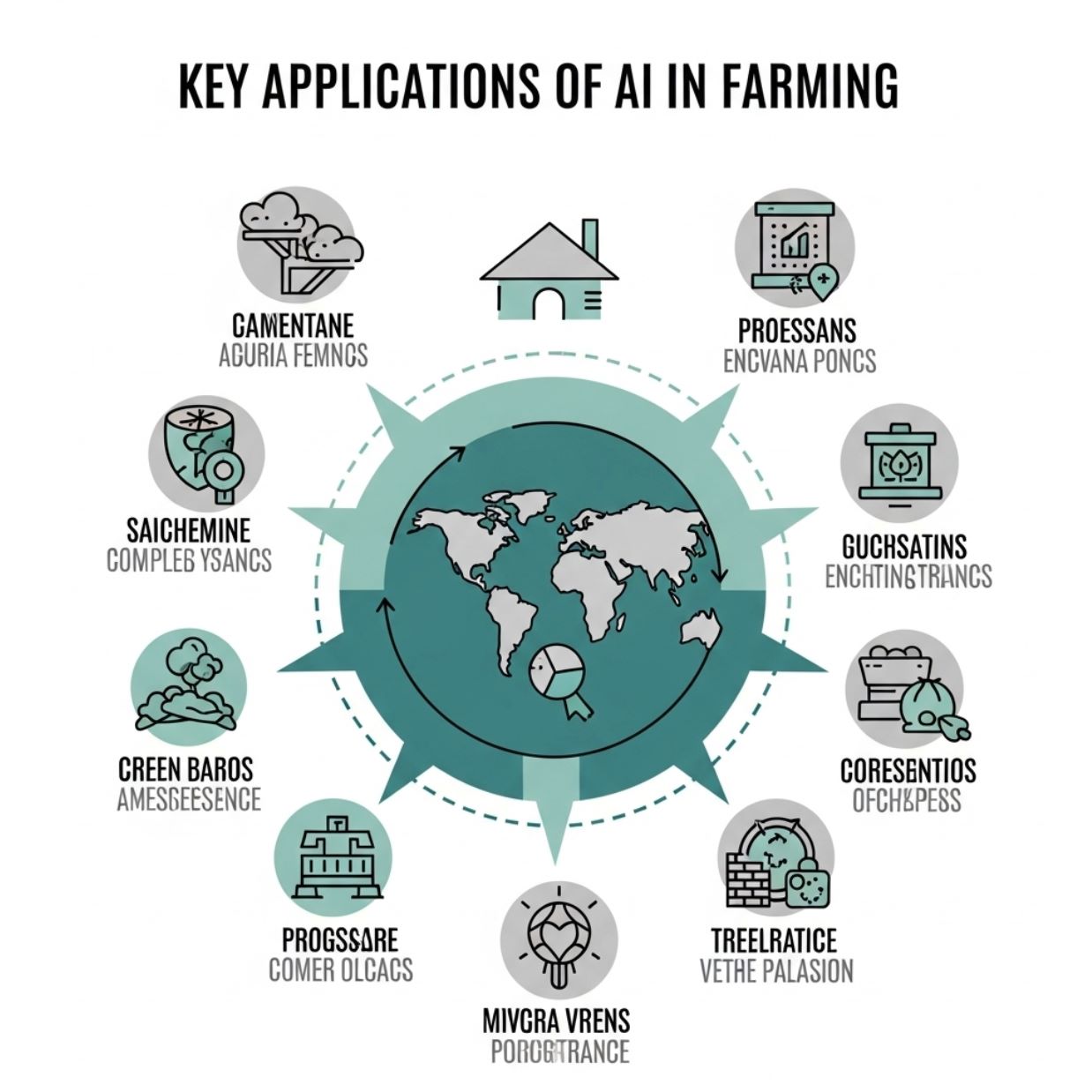
How AI Works on the Farm
Smart agriculture relies on a range of technologies working together. Here are the key components that power AI-driven farming:
IoT Sensors & Data Collection
Farms are outfitted with soil moisture sensors, weather stations, cameras, satellite links, and more. These devices collect continuous field data.
- Soil and water sensors form the backbone of IoT-enabled smart agriculture
- Critical readings on moisture, temperature, pH, and nutrients
- Continuous real-time monitoring across entire fields
Drones & Remote Sensing
Aerial drones and satellites equipped with cameras and multispectral imagers gather high-resolution pictures of crops.
- AI software stitches together images to monitor crop health
- Flag stressed plants or pest outbreaks across acres quickly
- Multispectral imaging reveals invisible plant stress
Machine Learning Algorithms
Farm data is fed into ML models on servers or edge devices to analyze patterns and make predictions.
- Neural networks and random forests predict yields and diagnose diseases
- Unsupervised learning finds unusual anomalies in crop data
- Reinforcement learning helps robots learn optimal actions over time
Decision Support Systems (DSS)
User-friendly platforms and apps integrate AI insights into actionable advice for farmers.
- Cloud or mobile dashboards compile sensor data and forecasts
- Real-time alerts: "Irrigate Field B now" or "Apply treatment to Plot 3"
- Accessible interfaces for farmers of all technical levels
Edge AI & On-Farm Computing
New systems process data directly on the farm instead of sending everything to the cloud.
- On-device AI analyzes images or sensor data in real time
- Crucial for farms with limited internet connectivity
- Reduces lag and increases reliability in rural settings
Blockchain & Data Platforms
Some initiatives use blockchain to securely record farm data and AI outputs.
- Farmers own their data via tamper-proof ledgers
- Ensures AI recommendations are transparent
- Reliably verifies products like organic labels
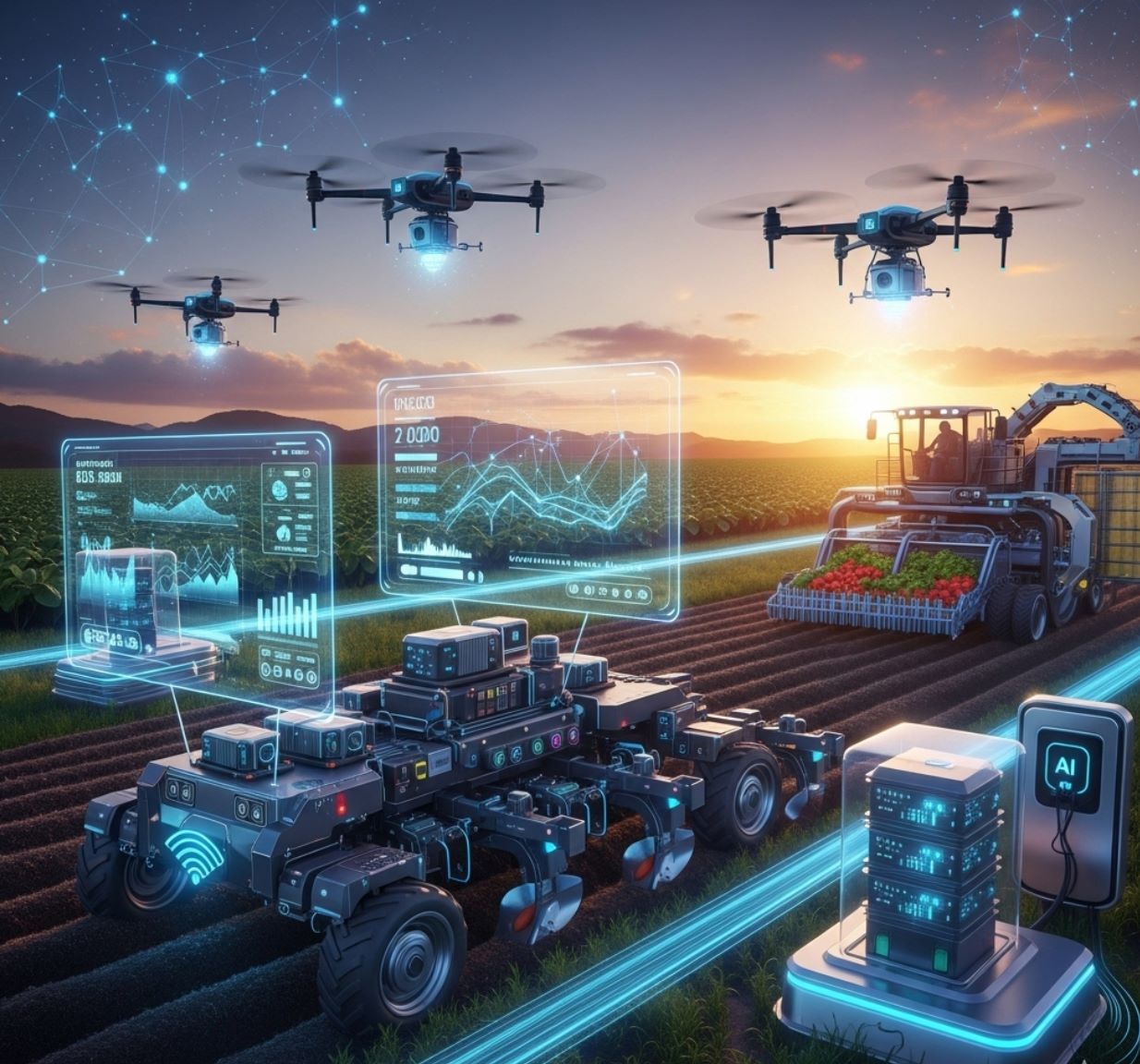
Benefits of AI in Agriculture
Bringing AI into farming offers transformative advantages across productivity, sustainability, and resilience:
Higher Yields, Lower Costs
Environmental Sustainability
Climate Resilience
Data-Driven Decisions
Economies of Scale
Real-Time Optimization
AI-powered advisory services can reduce extension costs from ~$30 to $0.30 per farmer
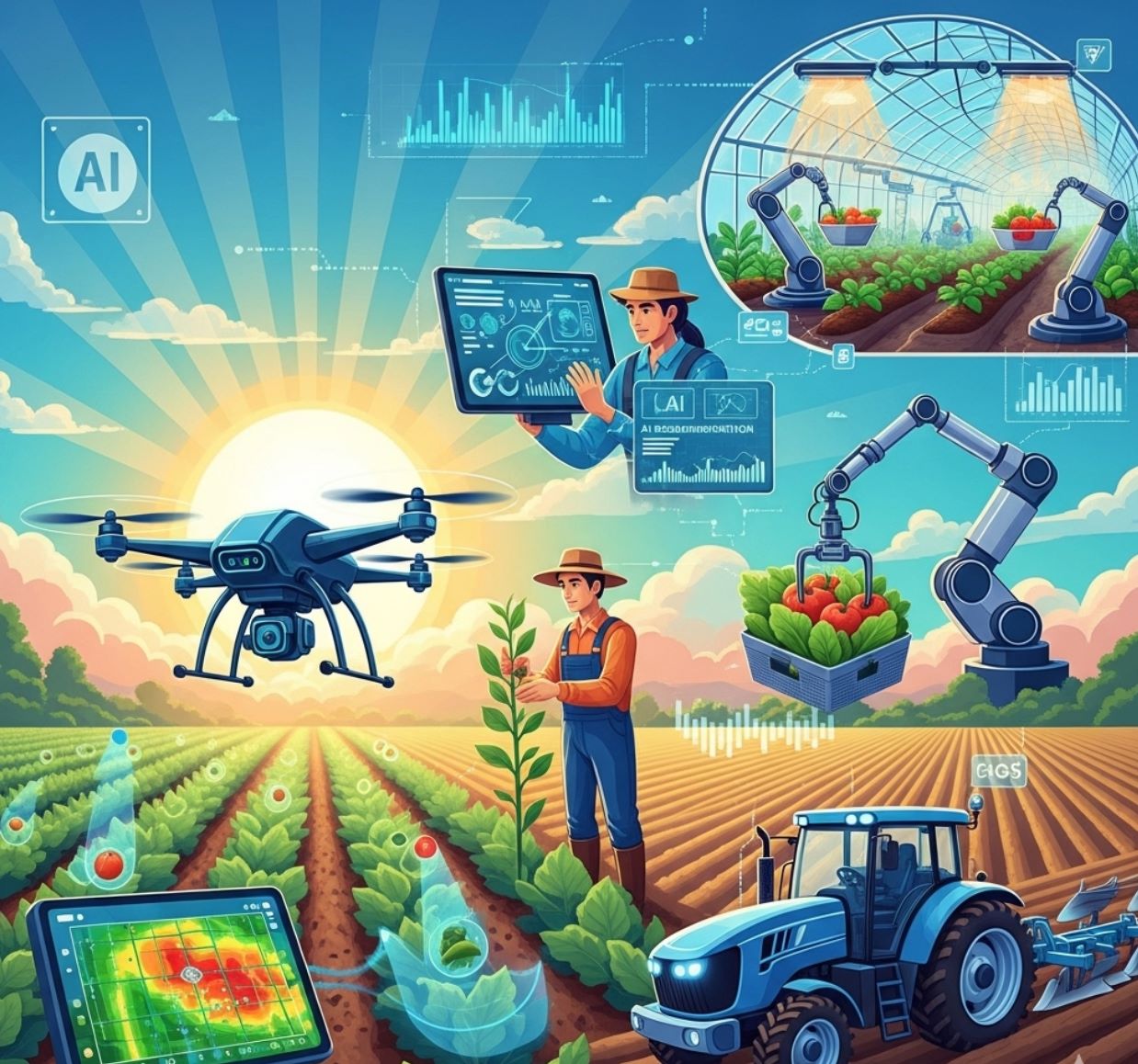
Global Trends and Initiatives
AI-driven agriculture is taking off worldwide. Leading organizations and governments are investing heavily in smart farming technologies:
United Nations / FAO
The UN Food and Agriculture Organization (FAO) has made AI a core strategy for digital agriculture. FAO is developing a global agrifood language model and partnering to deploy AI advisory services in Ethiopia and Mozambique.
- Developing global knowledge AI for farmers and policymakers
- Digital tools (sensors + IoT) enable more precise farming
- AI elevates systems by detecting hidden patterns and predicting crises
- Focus on making technology accessible to developing nations
United States / NASA
NASA's Harvest consortium uses satellite data combined with AI to support agriculture globally. These efforts demonstrate how space-age data and AI can help on-the-ground farmers make better decisions.
- AI-powered crop yield forecasts from satellite imagery
- Drought early warning systems
- Fertilizer management tools analyzing plant spectral signatures
- Nitrogen use optimization through advanced analytics
China
China is rapidly deploying AI and big data in farming. Its "Smart Agriculture Action Plan (2024–2028)" promotes drones and AI sensors in rural areas, making it a leading adopter of smart farming at scale.
- Drone fleets survey crops across vast agricultural areas
- Automatic irrigation stations with AI optimization
- Blockchain-based traceability (e.g., mango tracking: 6 days → 2 seconds)
- Major tech firms (Alibaba, JD.com) integrating AI for supply chain
Europe & OECD
The OECD highlights AI as part of "data-driven innovations transforming food systems." EU research programs and startup hubs are pushing smart farming tools, from autonomous tractors to AI crop disease apps.
- Precision agriculture for sustainability initiatives
- Innovation hubs in Netherlands and Germany
- AI for Agriculture working group on governance and data-sharing
- Focus on ethical standards and interoperability
International AI for Good
Events like the ITU AI for Good Summit (with UN Food Programme and FAO) are actively discussing smart farming standards, including AI interoperability and scaling for smallholders.
- Global dialogue on harmonizing AI use in agriculture
- Addressing ethical, social, and technical gaps
- Standards for AI interoperability across platforms
- Focus on inclusive access for smallholder farmers
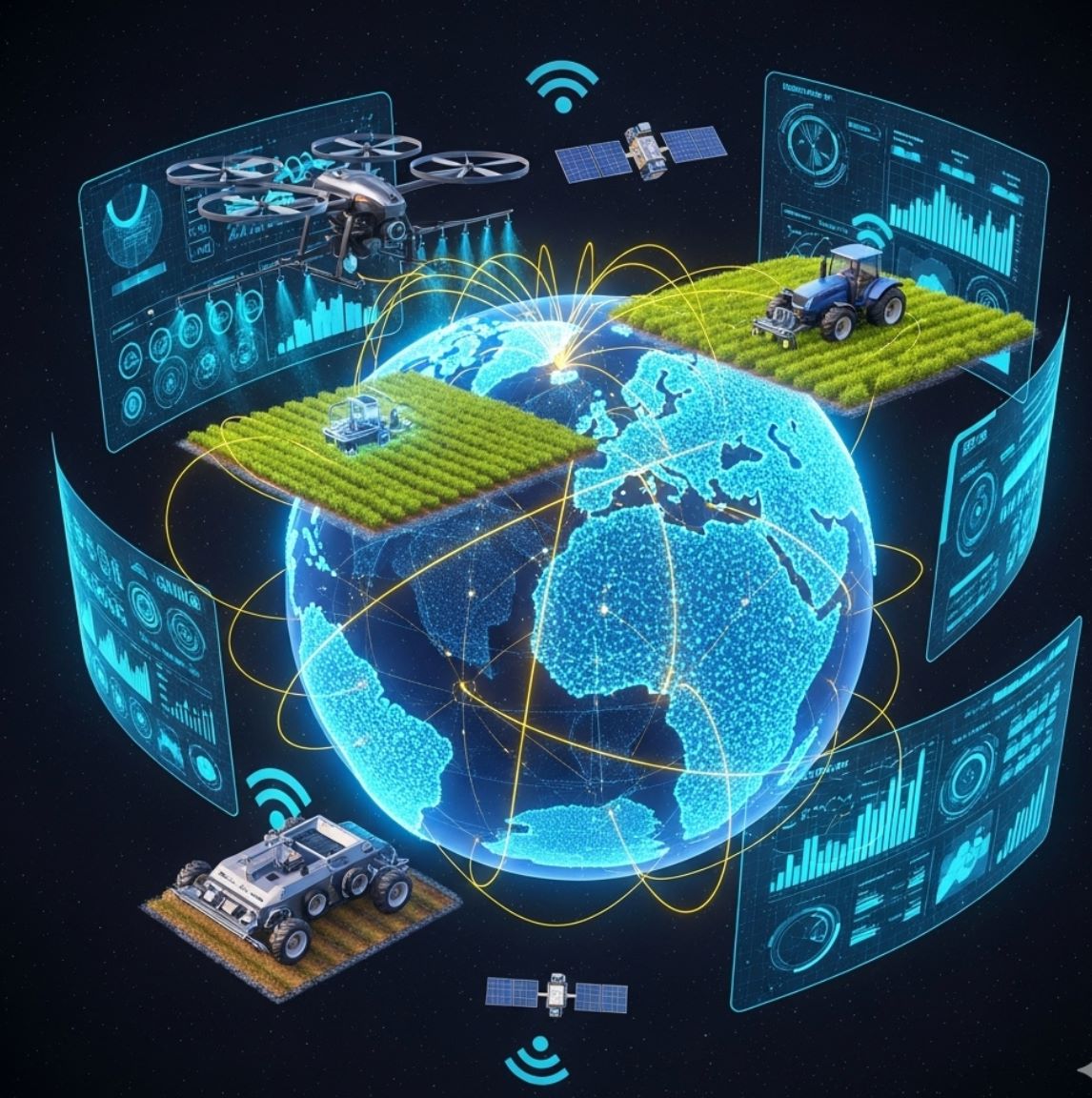
Challenges and Considerations
While AI promises much, smart farming faces significant hurdles that must be addressed for widespread adoption:
Data Access and Quality
AI needs lots of good data to function effectively. Collecting accurate sensor data in the field is challenging – equipment can fail or give noisy readings in extreme weather. Many rural farms lack reliable internet or power for IoT devices.
Cost and Infrastructure
High-tech sensors, drones, and AI platforms can be expensive. Smallholder farmers in developing regions may not afford them. High infrastructure costs and economic inaccessibility remain significant barriers.
- Subsidies and government support programs needed
- Farmer cooperatives can share costs
- Low-cost open-source alternatives in development
- Scalable solutions for different farm sizes
Technical Expertise
Operating AI tools and interpreting their advice requires training. Farmers may lack digital skills or trust in machines. Biased algorithms trained on big farms' data could marginalize smallholders.
Interoperability and Standards
Currently, many smart-farm devices use proprietary platforms. This siloing prevents farms from mixing and matching tools. Experts argue for open standards and vendor-neutral systems to avoid lock-in.
Standards groups (like ITU/FAO Focus Group on AI for Digital Agriculture) are working on guidelines so that sensors and data from different makers can work together seamlessly.
Ethical and Security Concerns
Centralizing farm data raises privacy issues. Big agribusinesses might control AI services and exploit farmer data. Farmers often lack ownership of their own data, leading to risks of exploitation or unfair pricing.
Environmental Impact of AI
AI itself has a carbon cost. A single AI query can consume far more energy than a normal internet search. Sustainable AI systems (energy-efficient models, green data centers) are needed, otherwise the environmental gains in farming might be offset by increased energy use.
Overcoming these challenges will take multi-stakeholder efforts: governments, researchers, agribusinesses, and farmers all need to collaborate. Inclusive policymaking is essential to prevent small farmers from being left behind.
— OECD Agricultural Policy Report
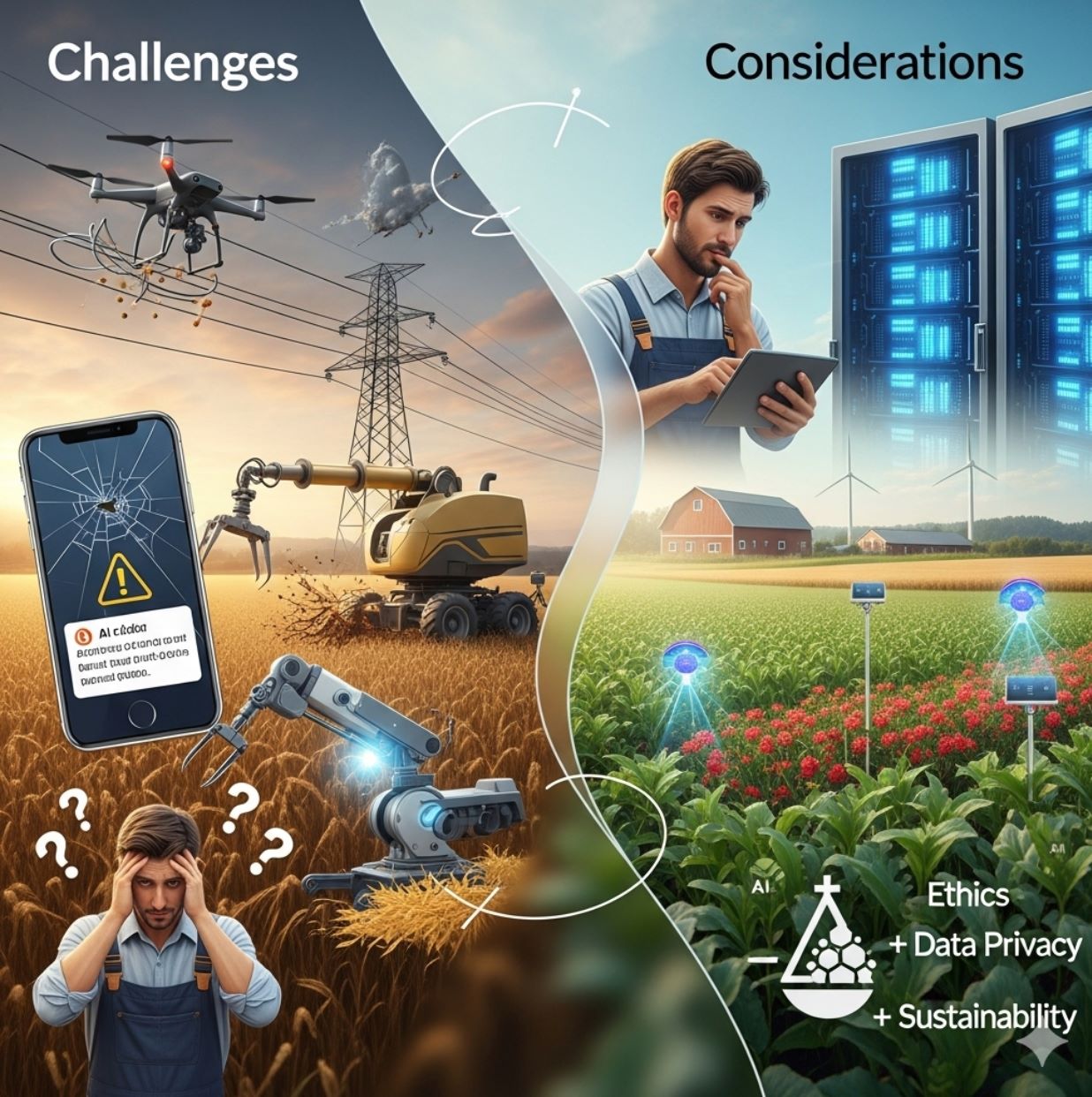
Future Outlook
Emerging technologies promise to push smart agriculture even further, creating new possibilities for sustainable and efficient farming:
Edge AI and IoT Fusion
On-device AI processors will get cheaper, letting sensors and robots make decisions instantly on-site. Farms will use tiny AI chips in drones and tractors to react in real time without cloud dependency.
AI-Driven Robotics
Autonomous farm machines are already in trials. In the future, swarms of AI-coordinated robots could tend entire fields, continuously learning from their environment. Reinforcement learning will make them smarter at tasks like detecting ripe fruit or optimizing planting patterns.
Generative AI and Agronomy
Large language models tailored to agriculture could advise farmers in many languages, answer queries on best practices, and even design new seed varieties through computational breeding. AI is also being used to develop alternative proteins, showing the technology's reach beyond the field.
Climate-Smart Farming
AI will increasingly focus on climate resilience. Advanced forecasting models could simulate dozens of climate scenarios and recommend crop choices or planting dates. Combining AI with blockchain could also enable carbon-credit tracking for regenerative practices.
Global Collaboration
International efforts will scale up. FAO's planned "Agrifood Systems Technology and Innovation Outlook" (2025) aims to be a public database of agri-tech, helping countries invest wisely. United Nations programs and private alliances are targeting sustainable food systems with AI.
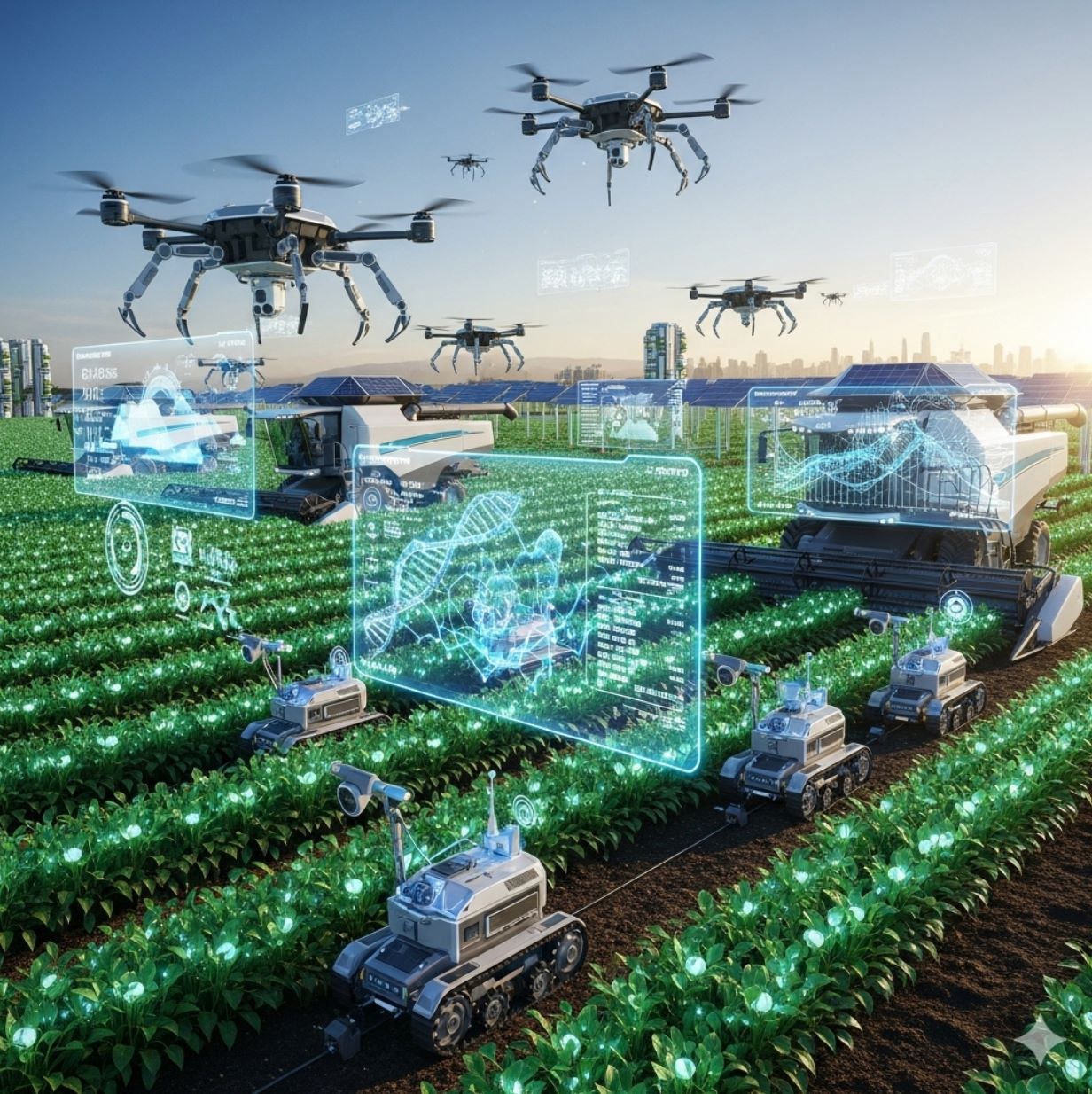
Top AI Tools in Agriculture
CropSense
Application Information
| Author / Developer | CipherSense AI |
| Supported Devices | Web-based platform (desktop and mobile browsers) |
| Languages / Regions | English; optimized for African agricultural regions |
| Pricing Model | Free tier with limited features; premium plans for advanced analytics |
General Overview
CropSense is an AI-powered agri-intelligence platform developed by CipherSense AI to revolutionize precision farming across Africa. By combining satellite imagery, Internet of Things (IoT) sensor data, and machine learning algorithms, CropSense provides farmers, agribusinesses, and cooperatives with actionable insights for optimizing crop performance, soil management, and yield forecasting.
The platform empowers users to make informed decisions that boost productivity, reduce environmental impact, and improve overall farm profitability. CropSense is part of Africa's digital agriculture transformation, helping bridge the gap between smallholder farmers and modern technology.
Detailed Introduction
CropSense represents a major leap forward in data-driven agriculture for emerging markets. Built by CipherSense AI, the platform integrates advanced AI models with remote sensing technologies to deliver real-time insights into crop health, soil fertility, and environmental factors.
The platform uses satellite data and localized weather models to monitor conditions across vast agricultural areas, offering early warnings about pests, diseases, and water stress. By translating complex data into easy-to-understand visuals and recommendations, CropSense empowers farmers to take preventive actions, optimize resource use, and ensure sustainable land practices.
Beyond individual farmers, CropSense also serves financial institutions, government agencies, and agribusinesses by providing crop risk assessments and yield analytics that can improve loan decisions, insurance modeling, and supply chain planning. Its scalable design allows organizations to integrate its intelligence via APIs or white-label solutions, making it a key enabler of smart agriculture across Africa.
Key Features
AI-powered health diagnostics through satellite and IoT data for continuous crop surveillance.
Comprehensive insights into soil health, moisture levels, and carbon content for optimal fertilization.
Early detection of pests, diseases, and adverse weather conditions to prevent crop losses.
AI-based yield prediction for better resource planning and harvest optimization.
Visual tools for tracking multiple farms or regions in one unified view.
Seamless integration with third-party agricultural systems and white-label solutions.
Download or Access Link
User Guide
Create an account on the official CropSense website to get started with the platform.
Enter your farm size, location coordinates, and crop type to enable accurate monitoring.
Optionally connect IoT sensors or upload existing farm data to enhance analytics accuracy.
Access real-time maps, crop health analytics, and alerts through your personalized dashboard.
Use AI-generated recommendations for irrigation, fertilization, and pest control strategies.
Track performance and yield over time using comparative analytics and historical data.
Notes & Limitations
- The free version covers limited area monitoring (up to 1 hectare maximum).
- Advanced features such as detailed yield prediction and IoT integration require paid subscription plans.
- Platform accuracy depends on the quality of satellite imagery and available ground data.
- Currently optimized for African regions; global expansion is in progress.
- Mobile app versions are not yet available on Google Play or the App Store.
Frequently Asked Questions
CropSense was developed by CipherSense AI, an African AI and data analytics company focused on smart agriculture solutions.
A free tier is available for basic crop monitoring, while advanced analytics and enterprise features require a paid subscription.
The platform uses a combination of satellite imagery, IoT sensor data, and localized weather data to generate insights.
Yes, CropSense offers API access and white-label options for partners and agribusinesses.
CropSense focuses on local relevance for African farmers, offering AI models calibrated to regional climate and soil conditions.
Plantix
Application Information
| Developer | PEAT GmbH (Progressive Environmental & Agricultural Technologies) |
| Supported Devices | Android and iOS smartphones; web browser access |
| Languages | 18+ languages; used in over 150 countries worldwide |
| Pricing | Free to use; optional paid enterprise API integrations |
What is Plantix?
Plantix is an AI-powered agricultural app developed by PEAT GmbH that helps farmers and agronomists identify plant diseases, pests, and nutrient deficiencies instantly using smartphone images. Often called a "crop doctor," Plantix uses machine learning and an extensive image database to deliver accurate diagnoses and actionable solutions. With millions of users worldwide, it empowers farmers to protect crops, increase yields, and adopt sustainable farming practices—all from their mobile device.
How Plantix Transforms Digital Agriculture
Plantix has become one of the world's leading mobile tools for precision agriculture and digital plant health management. Created by PEAT GmbH, the app harnesses artificial intelligence and image recognition to detect over 400 plant issues across 30+ major crops, including maize, wheat, rice, and vegetables.
The process is simple: users photograph an affected plant, and within seconds, Plantix analyzes the image using its AI model trained on millions of agricultural photos. The app identifies potential diseases or deficiencies, offers scientifically validated solutions, and provides localized product recommendations for treatment.
Beyond diagnostics, Plantix connects users to an interactive farmer community, enabling peer-to-peer support and expert guidance. The "Plantix Vision API" extends its capabilities to agribusinesses and research institutions, integrating AI plant recognition into broader agricultural platforms.
Its mission is to make precision farming accessible to everyone—particularly smallholder farmers—by combining cutting-edge technology with community-based knowledge exchange.
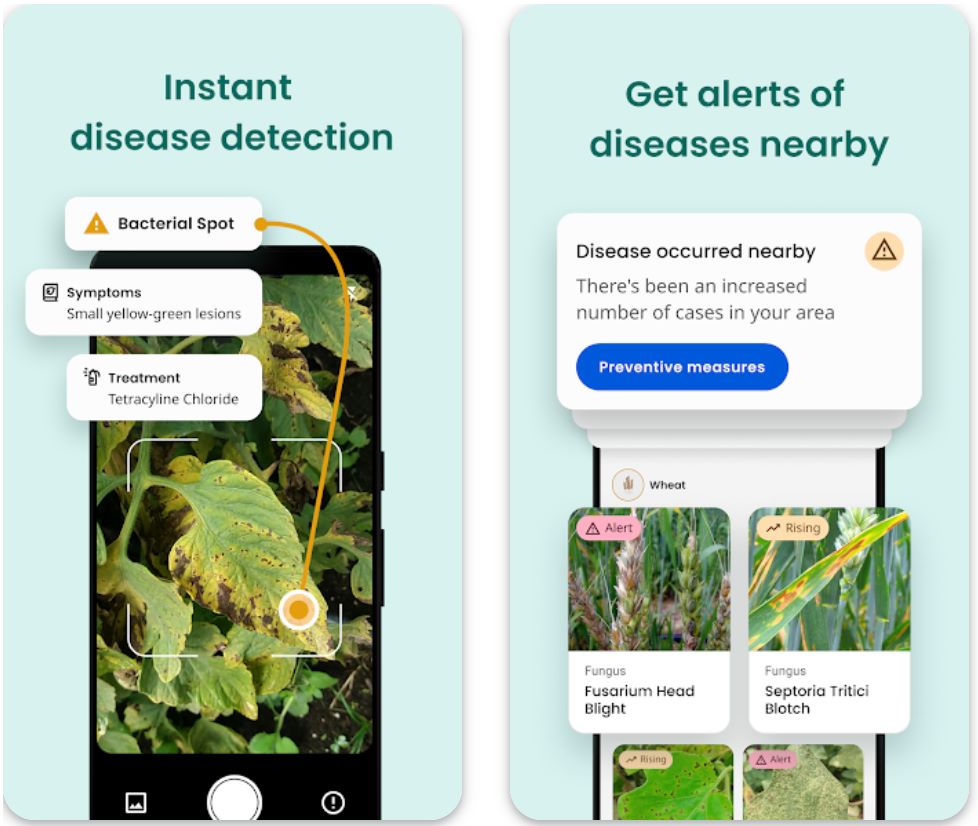
Key Features
AI image recognition detects plant diseases, pests, and nutrient deficiencies in seconds.
Practical guidance on treatment, fertilization, irrigation, and preventive care strategies.
Share photos, ask questions, and get advice from global agricultural experts and farmers.
Tailored solutions based on crop type, region, and local product availability.
Plantix Vision API for integrating AI diagnostics into third-party agricultural systems.
Download or Access Link
How to Use Plantix
Get the Plantix app from Google Play or the Apple App Store on your smartphone.
Sign up to save diagnostic data and join the global Plantix farming community.
Take a clear photo of the affected plant leaf using your smartphone camera.
The AI analyzes your image and identifies the issue with suggested treatments.
Review recommendations on fertilizers, preventive care, and best agricultural practices.
Connect with other farmers to share experiences and discuss plant care strategies.
Important Notes & Limitations
- Diagnostic accuracy depends on image quality—ensure good lighting and focus for best results
- Some rare crop types or local plant diseases may not yet be included in the AI database
- Internet connection required for real-time image analysis and community interactions
- Product recommendations vary by region based on local availability
Frequently Asked Questions
Plantix was developed by PEAT GmbH, a German agri-tech company specializing in AI solutions for sustainable agriculture.
It uses artificial intelligence and image recognition trained on millions of photos to analyze plant images and detect disease symptoms accurately.
Yes, Plantix offers a free app for farmers. Enterprise users or partners can access paid API solutions for integration into their systems.
The app supports more than 30 major crops, including rice, maize, wheat, tomato, soybean, and various vegetables.
Some features, like viewing past reports, are available offline, but diagnosis and AI processing require an internet connection.
Plantix is available on the Google Play Store and Apple App Store or visit Website.
CropGen
Application Information
| Author / Developer | LeanCrop AgriTech Pvt. Ltd. |
| Supported Devices | Web platform, Android, and iOS |
| Languages / Countries | English; primarily available in India and global agricultural markets |
| Pricing Model | Free to download with paid professional plans for extended features |
What is CropGen?
CropGen is a modern digital farm management platform designed to help farmers, agronomists, and agribusinesses streamline their operations. The tool integrates field mapping, analytics, financial tracking, and team performance monitoring into a unified interface.
With its cloud-based infrastructure and plug-and-play integrations, CropGen enables data-driven decision-making across multiple farms, improving productivity and profitability through real-time insights.
Comprehensive Farm Management Solution
CropGen offers a data-centric approach to agricultural management by combining advanced analytics, geospatial visualization, and operational monitoring. Through its intuitive dashboard, users can track all field activities—from soil conditions to input management—while also gaining visibility over workforce performance.
In the context of digital transformation in agriculture, CropGen stands out as a platform that emphasizes transparency and precision. By consolidating data from various sources—such as drone imagery, IoT sensors, and financial systems—it allows farmers to optimize production cycles and mitigate risks. The platform's modular design and seamless integrations make it adaptable for farms of different sizes, supporting scalability and long-term sustainability.
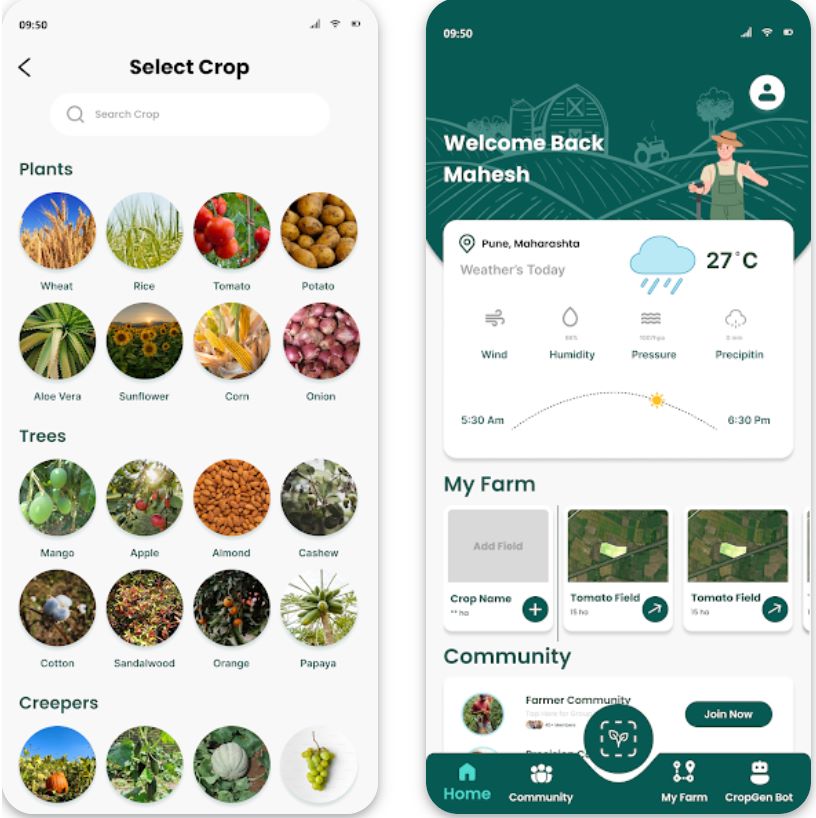
Key Features
Visualize field layouts and monitor conditions in real time with geospatial precision.
Generate custom reports on yield, finance, and operational performance for data-driven decisions.
Track workforce efficiency and assign field-level responsibilities with ease.
Connect with third-party tools such as QuickBooks and drone imaging systems seamlessly.
Manage farm data anytime via mobile apps or web browsers for maximum flexibility.
Download or Access Link
How to Use CropGen
Sign up via the CropGen website or mobile app to get started with your farm management journey.
Input field boundaries, crop types, and operational schedules to set up your farm profile.
Use map view to track field progress and create notes or flags for important observations.
Access the analytics dashboard for performance metrics and financial reports to optimize operations.
Assign tasks and review progress in real time to ensure efficient workforce management.
Connect external applications such as accounting or drone platforms for richer insights and enhanced functionality.
Important Limitations
- The free version offers limited functionality; full access requires a paid plan
- Mobile versions have limited offline capability
- Some integrations (e.g., drone or accounting tools) may require technical setup
- Public documentation for advanced customization and API access is limited
- Adoption outside India is growing but still regionally focused
Frequently Asked Questions
CropGen is developed by LeanCrop AgriTech Pvt. Ltd., an agricultural technology company focusing on smart farm management solutions.
The app is free to download, but advanced modules and analytics features may require a paid subscription.
CropGen supports Android, iOS, and web browsers, allowing cross-platform accessibility.
The platform integrates with accounting systems like QuickBooks and supports drone imagery for detailed field monitoring.
CropGen is ideal for farmers, agribusinesses, cooperatives, and consultants managing large or distributed farm operations.
Yes, CropGen is accessible globally, though its main user base and language support are centered in India and English-speaking regions.
xarvio FIELD MANAGER (BASF)
Application Information
| Author / Developer | BASF Digital Farming GmbH |
| Supported Devices | Web, Android, and iOS |
| Languages / Countries | Available in over 20 languages; supported in 40+ countries across Europe, North America, and other global markets |
| Pricing Model | Free to download with paid premium features depending on region and functionality |
General Overview
xarvio FIELD MANAGER, developed by BASF Digital Farming, is an advanced precision agriculture platform that empowers farmers to make smarter, data-driven crop management decisions.
By combining satellite imagery, agronomic models, and localized weather data, the app delivers field-specific insights on crop health, disease risks, and optimal input timing.
The platform enhances productivity, reduces waste, and optimizes sustainability, making it one of the most trusted digital solutions for modern farming worldwide.
Detailed Introduction
xarvio FIELD MANAGER is part of BASF's digital agriculture ecosystem, designed to transform how farmers plan and manage their fields. The platform leverages artificial intelligence and agronomic algorithms to analyze satellite images, weather conditions, and soil health, generating recommendations tailored to each field zone.
For precision agriculture applications, xarvio FIELD MANAGER exemplifies how technology bridges the gap between data analytics and real-world crop management.
The app's precision farming approach ensures that every decision—from fertilization to disease prevention—is backed by data, leading to higher yields and lower environmental impact.
Additionally, FIELD MANAGER integrates seamlessly with other BASF tools and third-party agricultural software, allowing for a connected and transparent farm management experience.
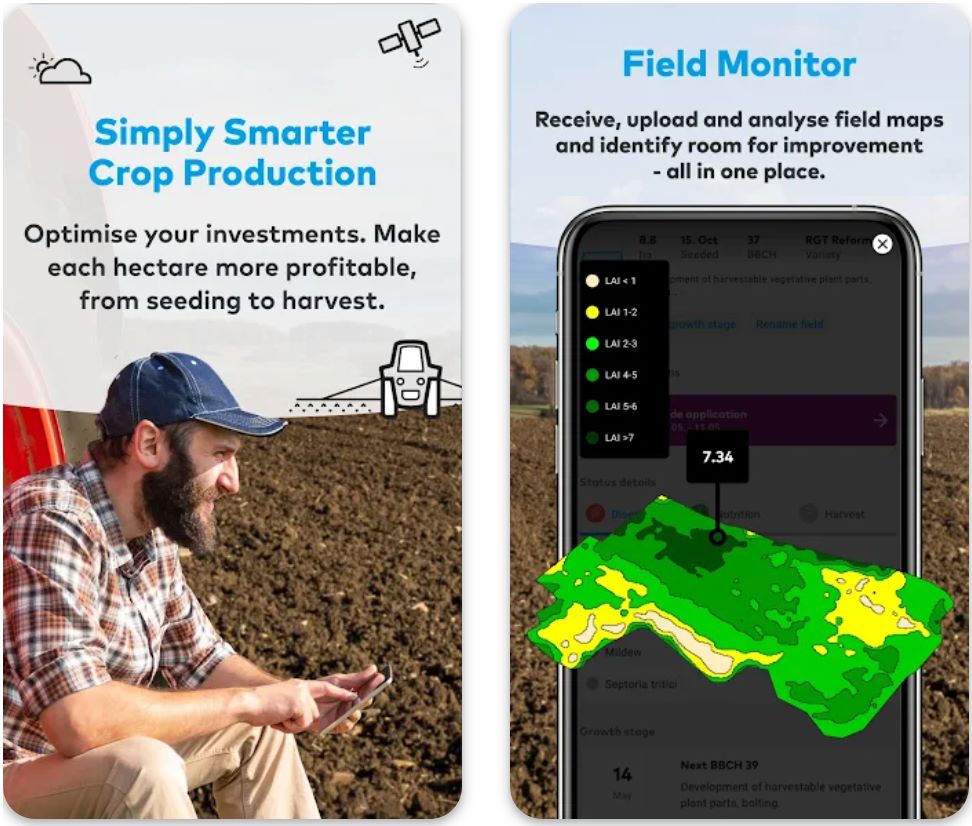
Key Features
Predicts disease risks using satellite imagery and advanced agronomic models for proactive crop protection.
Recommends the optimal time for fungicide and pesticide application based on weather and crop conditions.
Suggests optimal seed varieties and placement strategies for maximum yield potential.
Provides field-specific maps highlighting crop health, growth stages, and input requirements.
Available on both web and mobile apps for real-time monitoring and updates from anywhere.
Download or Access Link
User Guide
Sign up on the xarvio FIELD MANAGER website or mobile app to get started.
Import or draw field boundaries manually or via GPS integration for accurate mapping.
Receive satellite-based analysis and crop health updates tailored to your fields.
Use spray timers and risk alerts to optimize treatment schedules and reduce waste.
Track performance and adapt management strategies throughout the growing season.
Notes and Limitations
- Some features, such as SeedSelect and advanced analytics, may require a paid plan
- Real-time recommendations depend on satellite image quality and local data availability
- Regional differences exist in functionality and crop support
- Internet access is required for most data synchronization features
- Free access plans may have limited analytics depth compared to enterprise versions
Frequently Asked Questions
It was developed by BASF Digital Farming GmbH, a division of BASF SE specializing in agricultural innovation and digital solutions.
Yes, xarvio FIELD MANAGER is free to download, but premium features may require a subscription depending on the region.
The app supports a wide range of crops including wheat, barley, corn, potatoes, and oilseed rape.
Some basic data may be cached, but most functionalities require an active internet connection.
Its integration of AI, real-time weather, and satellite imaging enables precise decision-making, helping farmers reduce costs and increase sustainability.
xarvio FIELD MANAGER is available on the official website, Google Play Store, and Apple App Store.
Conclusion
AI is revolutionizing agriculture by turning farms into high-tech operations. Modern smart sensors and AI models now enable real-time monitoring of fields, predictive analytics for crop growth, and automated decision-making across key tasks. Farmers can irrigate precisely, detect disease early, and fertilize optimally, resulting in better yields and lower resource use.
AI-driven systems now routinely support precision irrigation, early disease detection, and optimized fertilization in crops.
— Agricultural Technology Review
Current Obstacles
- Connectivity and infrastructure gaps
- High implementation costs
- Data privacy concerns
- Farmer training requirements
Path Forward
- Thoughtful policies and collaboration
- Clear data regulations
- Open standards development
- Inclusive innovation programs
However, the technology is not a silver bullet. Issues like connectivity, costs, data privacy, and farmer training remain real obstacles. Addressing these will require thoughtful policies and collaboration. With proper governance (like clear data regulations and open standards), AI can indeed serve everyone – not just large farms.
As FAO and OECD reports emphasize, success depends on inclusive, ethical innovation – ensuring that smart farming tools are energy-efficient, explainable, and affordable for all farmers. If we get this right, AI will help transform agriculture into a modern industry fit for the challenges of the 21st century.



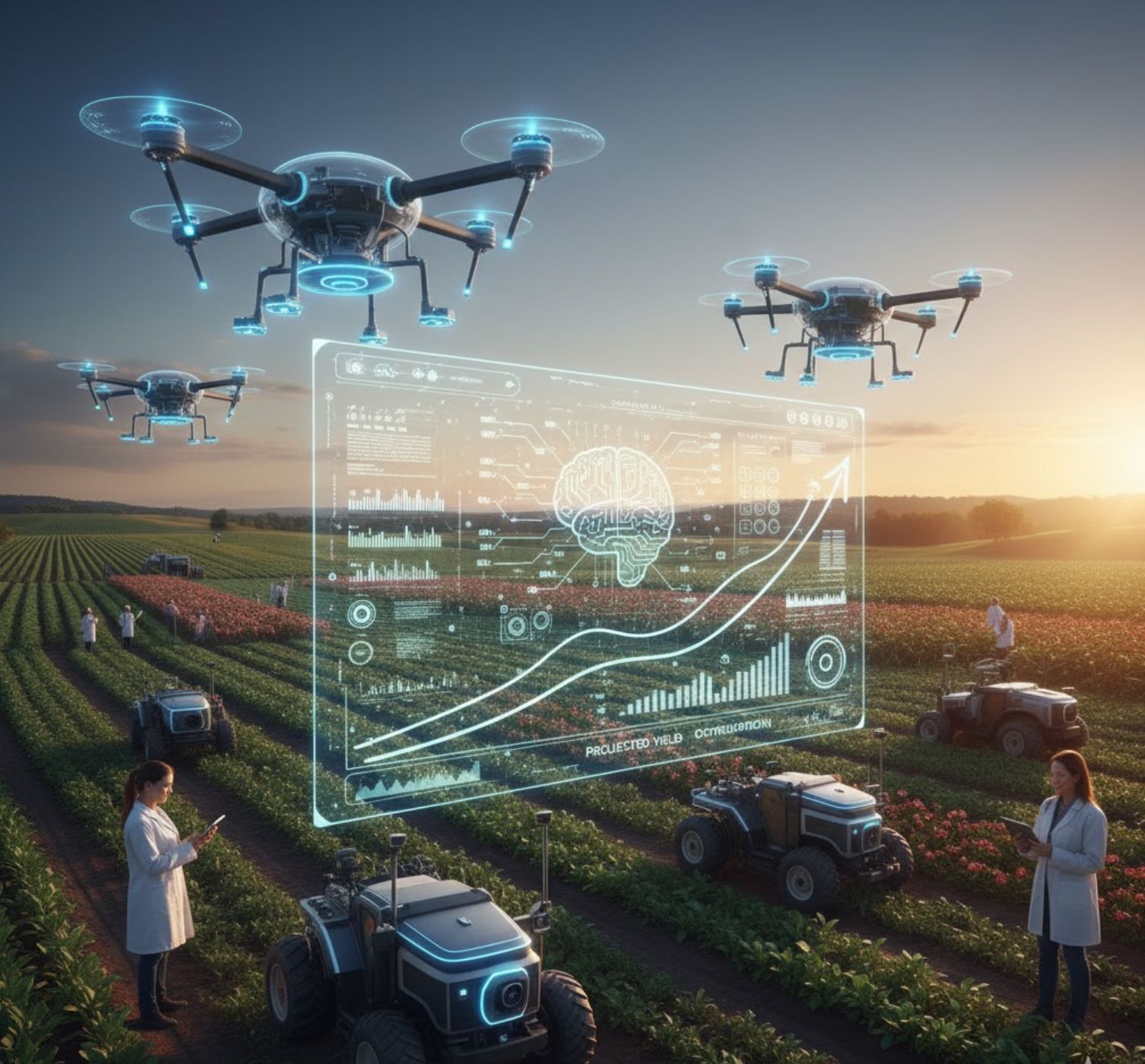
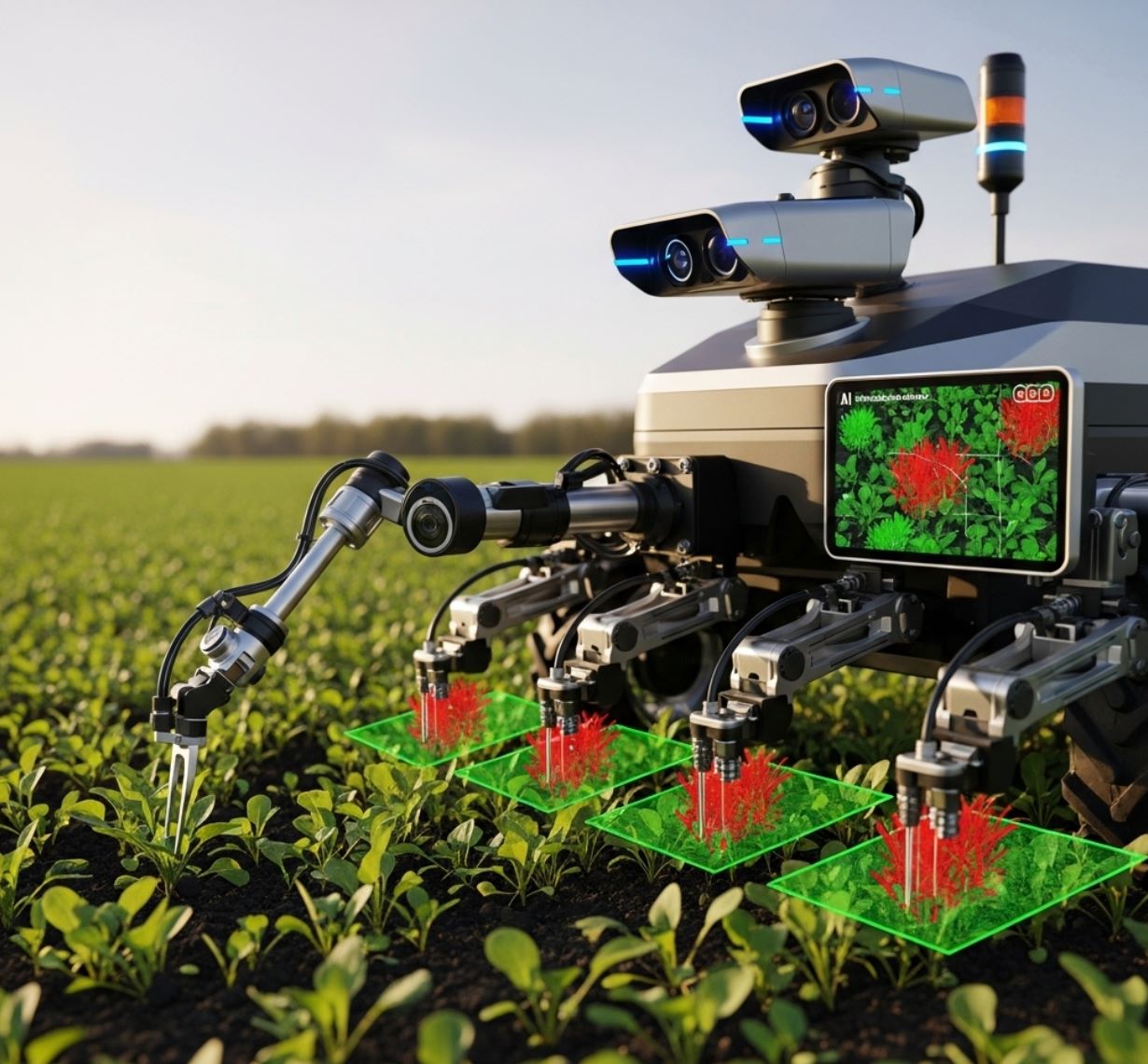
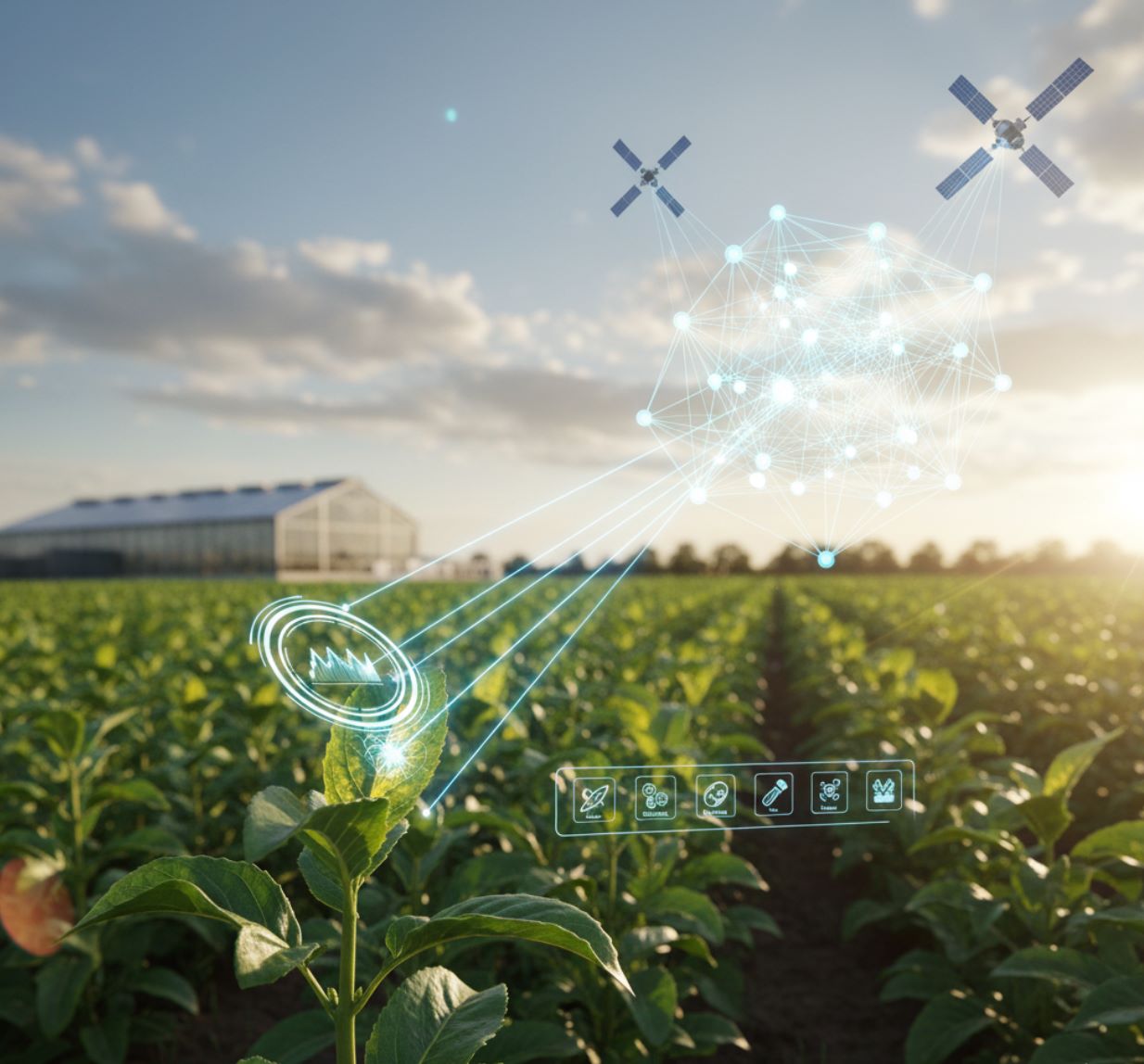
Comments 0
Leave a Comment
No comments yet. Be the first to comment!